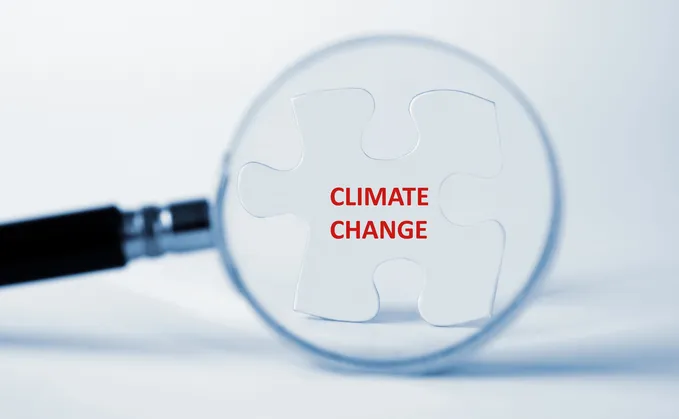
WHO Launches Comprehensive Framework Addressing the Intersection of Climate Change and Tuberculosis
In a decisive move to confront two of the world’s most pressing public health challenges, the World Health Organization (WHO) has released a comprehensive new framework highlighting the urgent need to address the interconnected threats posed by climate change and tuberculosis (TB). The framework underscores how a warming planet is intensifying conditions that foster the spread and severity of TB, one of the deadliest infectious diseases globally.
With climate change rapidly reshaping environmental, social, and health systems, WHO is urging national governments, multilateral agencies, donors, and civil society to prioritize integrated, cross-sector strategies that confront both the drivers and consequences of TB in a changing climate. The newly published guidance reveals that global warming and environmental degradation are not only ecological or economic issues—they are accelerating infectious disease epidemics, including TB, and deepening existing health inequalities.
Climate Change: A Growing Driver of Tuberculosis Risk
Tuberculosis, a preventable and curable disease caused by the bacterium Mycobacterium tuberculosis, still kills more people globally each year than any other infectious disease. According to the latest WHO estimates, in 2023, TB claimed 1.3 million lives and infected over 10 million people. Yet the gains made in TB control are increasingly under threat from the escalating climate crisis.
The new WHO framework identifies three principal pathways through which climate change amplifies TB risk and undermines control efforts:
1. Migration and Displacement
One of the most visible and disruptive impacts of climate change is the displacement of populations due to extreme weather events and environmental degradation. Hurricanes, floods, wildfires, droughts, and rising sea levels are forcing millions to flee their homes, often relocating into overcrowded and poorly ventilated shelters or informal settlements. These settings are ideal breeding grounds for TB transmission, particularly when basic health and social services are unavailable or overstretched.
In 2023 alone, weather-related hazards displaced more than 20 million people. Looking ahead, the World Bank projects that up to 216 million people could become climate-displaced by 2050 if decisive action is not taken. Many of these displaced individuals are likely to be vulnerable to TB due to poor nutrition, stress, interrupted healthcare, and exposure to other risk factors.
2. Food and Water Insecurity
Climate change is also exacerbating food and water insecurity through more frequent and severe droughts, floods, and temperature extremes. These environmental shocks have cascading effects on agricultural productivity and food supply chains, driving up rates of malnutrition—a key determinant of TB susceptibility.
Malnutrition impairs the immune system, making individuals more vulnerable to TB infection and disease progression. WHO notes that nearly 10% of global TB cases are linked to undernutrition. This link is particularly concerning in low- and middle-income countries where people often lack access to high-quality food, clean water, and sanitation—all of which are vital for disease prevention and health maintenance.
3. Health System Disruptions
Another critical pathway through which climate change affects TB is by destabilizing healthcare systems. Natural disasters—such as cyclones, earthquakes, floods, and heatwaves—can damage clinics, disrupt medicine supply chains, displace healthcare workers, and interrupt services essential for TB diagnosis, treatment, and follow-up care.
In 2023, an estimated 93.1 million people were affected by climate-related natural hazards. During such crises, access to TB care often becomes a low priority, increasing the risk of treatment interruption, drug resistance, and mortality. Without treatment, TB can have a fatality rate as high as 50%, particularly in resource-limited settings.
An Urgent Call to Action
“Climate change is not only a planetary crisis—it’s a major health threat,” said Dr. Tereza Kasaeva, Director of WHO’s Global Programme on TB and Lung Health. “TB remains the world’s top infectious killer, and climate change threatens to reverse decades of progress in fighting this disease. We must integrate the TB response into climate adaptation efforts to protect the most vulnerable.”
The WHO framework calls for coordinated and inclusive action, urging national governments and global stakeholders to:
- Integrate TB control into climate and health strategies by including TB as a priority in national adaptation plans and climate-resilient health systems;
- Strengthen health infrastructure to withstand climate-related shocks and ensure continuity of TB care during crises;
- Secure sustainable financing mechanisms that enable countries to invest in both TB programs and climate adaptation, including through innovative funding streams such as climate-health trust funds and public-private partnerships;
- Foster cross-sector collaboration, involving not only health ministries but also sectors such as agriculture, urban planning, environmental protection, disaster management, and migration services.
WHO emphasizes that integrated strategies are essential because the root causes of TB and climate vulnerability often overlap. Communities experiencing poverty, food insecurity, housing instability, and limited access to healthcare are more likely to suffer from both the effects of climate change and the TB epidemic. These are not parallel challenges—they are mutually reinforcing crises.
Advocacy at Global Forums
To elevate the importance of TB in climate health discussions, WHO’s Global Tuberculosis Programme (GTB) has engaged with Member States and international stakeholders through a series of high-profile advocacy events in 2024.
In September, WHO partnered with the Pan American Health Organization (PAHO) and Brazil’s Ministry of Health to host a side event titled “Climate Change and TB” during the G20 Health Working Group meeting in Natal, Brazil. The event brought together G20 representatives, donors, and technical experts to examine how climate change is reshaping the global TB landscape and to advocate for integrated policy solutions.
Later that month, on September 23, WHO and the Government of Brazil co-hosted a high-level side event at the 79th Session of the United Nations General Assembly (UNGA). This event further amplified the message that addressing TB in the era of climate change requires urgent, coordinated international leadership and funding.
A Climate-Resilient TB Response
As the world prepares for the next UN Climate Change Conference, WHO is pushing for greater recognition of health, and particularly TB, as a climate issue. The organization is calling for countries to build climate-resilient health systems, embed TB within universal health coverage and social protection frameworks, and pursue climate-smart public health investments that leave no one behind.
WHO’s new framework signals a paradigm shift in global health governance—one that places equity, resilience, and planetary health at the core of infectious disease control.
“Solving TB in the context of climate change will require rethinking our approach to health,” Dr. Kasaeva noted. “We need to move from reactive responses to proactive, multisectoral strategies that can withstand the pressures of a warming world. Only then can we safeguard the progress we’ve made and achieve the vision of ending TB by 2030.”
As nations race against time to meet Sustainable Development Goals and climate commitments, WHO’s call is clear: the fight against TB must not be left out of climate agendas. Rather, it should be central to how the world builds a healthier, more equitable, and more resilient future.




